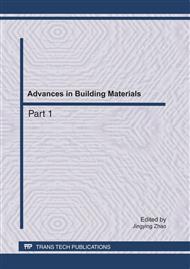p.725
p.730
p.735
p.740
p.744
p.749
p.753
p.757
p.761
Distribution of Fe(II) Concentration during Degradation of Rhodamine B by Fenton Reagent
Abstract:
The effects of reaction conditions including Fe2+, H2O2, oxalic acid, and humic acid dosages were discussed on the Fenton degradation of rhodamine B (RB). The optimal reaction conditions of Fenton reaction were 0.15 mM Fe2+, 5 mM H2O2, and pH 3.0, and the decolorization rate RB (10 mg/L) reached 97.8% after 30min catalytic degradation. The changes of Fe2+ concentrations in Fenton system has been focused on in this work. A relatively low concentration of Fe2+ was maintained during reaction process when Fe2+ and H2O2 were added with high concentration, and thus RB was degraded quickly. The results implicated that Fe2+ dosage played a very important role in the degradation of RB, and H2O2 dosage didn’t have an apparent influence on the degradation of RB in general. The Fenton degradation of RB could be inhibited in the presence of oxalic acid and humic acid, especially at a high concentration of oxalic acid and humic acid.
Info:
Periodical:
Pages:
744-748
Citation:
Online since:
May 2011
Authors:
Keywords:
Price:
Сopyright:
© 2011 Trans Tech Publications Ltd. All Rights Reserved
Share:
Citation:


